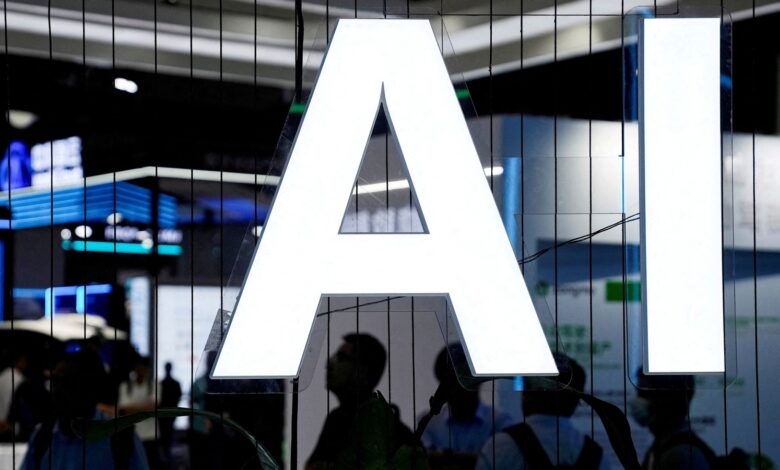Companies Making Significant Strides in Indian LLM – Tech Mahindra, Gnani.ai, Sarvam

We have officially entered the era of Artificial Intelligence or AI. AI is going to enter our lives in a big way and ChatGPT from Open AI is one of the prime examples of AI that is becoming ubiquitous. Large Language Models (LLMs) are at the heart of the ongoing AI revolution. However, most of the large language models from the West offer limited support for Indian languages. But this is going to change with significant development now focusing on regional LLMs and Indian languages.
Bhashini
Bhashini, an AI-based language translation initiative by the Government of India, aims to break the language barrier across India. The initiative supports 22 languages, over 300 AI models, and has reached over 500,000 mobile app downloads. AI4Bharat, a research lab at IIT Madras, is dedicated to advancing Indian language technology by developing open-source datasets, tools, models, and applications. Their pioneering work in this area has been recognized at leading international conferences. Among their major contributions are projects like IndicCorp, BPCC, Shrutilipi, Kathbath, IndicBERT, IndicTrans, IndicXlit, IndicWav2Vec, Indic Whisper, and TTS.
Read more: OpenAI’s ‘Strawberry’ o1 AI Can Think Like a Human—But Why Is It Named After a Fruit?
AI Sarvam
Sarvam AI, a generative AI startup founded by Vivek Raghavan and Pratyush Kumar and backed by Lightspeed, Peak XV Partners, and Khosla Ventures, is developing generative AI models focused on Indian languages. Sarvam AI aims to improve the accuracy of generative AI applications in India at a lower cost. Sarvam AI recently introduced a 2 billion parameter model, Sarvam 2B, which they have open-sourced and made available on Hugging Face. Sarvam AI claims that their model is significantly more effective on Indian languages than Meta’s Llama 3.1, Google’s Gemma 2, and GPT-4o.
Mahindra Technology
Tech Mahindra recently announced Project Indus with a focus on developing India’s largest LLM from scratch. Kunal Purohit, President – Next Generation Services, Tech Mahindra said, “India has traditionally been a technology consumer nation; however, we are now taking proactive steps to transform into a technology producer. This shift has created positive momentum and we have made significant progress with Project Indus and LLM Indic. From the very beginning, our goal was to build a platform model from scratch. With Project Indus, we have achieved our initial milestone by creating an open source platform model. Our goal is to cater to the different dialects spoken across India.” We have successfully launched Indus, a 1.2 billion parameter model trained on Hindi and its 37+ dialects, which allows users to ask questions in their native dialect and get accurate responses. This model ensures seamless interaction between brands and individuals across these dialects.”
Gnani.ai
Another company with an interesting approach is Gnani.ai, which has developed SLMs or small language models for industry-specific use cases. The company has been investing in AI long before it became mainstream. It has patented several innovations and counts Samsung Ventures and Infoedge Ventures as investors, given its expertise in many Indian languages that it has developed in-house. Ganesh Gopalan, Co-founder and CEO of Gnani.ai, believes that AI can solve some of the fundamental problems in India such as primary education, maternal healthcare, etc. He believes that we have only scratched the surface when it comes to using the power of AI. The sounds you hear in India are very different from anywhere else in the world, he adds, whether it is people talking in auto-rickshaws or trains.
Vaani Project
Project Vaani, a collaborative initiative by IISc Bangalore, ARTPARK and Google, aims to provide developers with access to over 14,000 hours of voice data in 59 languages, collected from 80 districts across India. Google is taking this initiative further by investing in a new project called Morni and developing AI models to support nearly 125 Indian languages.
While it is feasible to develop and train AI models locally, it is still heavily dependent on NVIDIA GPUs and lacks capable hardware. Recently, the Telangana Government partnered with Yotta Data Services to launch India’s largest AI supercomputer, equipped with 25,000 high-performance GPUs. The AI Cloud Data Center campus will have a dedicated GPU cloud infrastructure providing access to high-performance computing resources, powered by around 4,000 NVIDIA H100/H200 GPUs, scalable to over 25,000 GPUs in the future. These GPUs will be interconnected via high-speed networks. This infrastructure will be made available to startups, educational institutions, research labs, businesses, and government organizations.
Read more: WhatsApp to Enhance Meta AI with Multiple Voice Options to Enhance Personalized User Interactions
Voice bots have emerged as a prominent AI application in India, largely driven by the rapid growth of the fintech industry. AI is clearly going to become ubiquitous across the country, with many deployments serving as companions to enhance existing processes. It is worth noting that developing Indian language models is significantly more resource-intensive than English. Despite these challenges, India is set to become one of the largest markets for widespread AI adoption.




